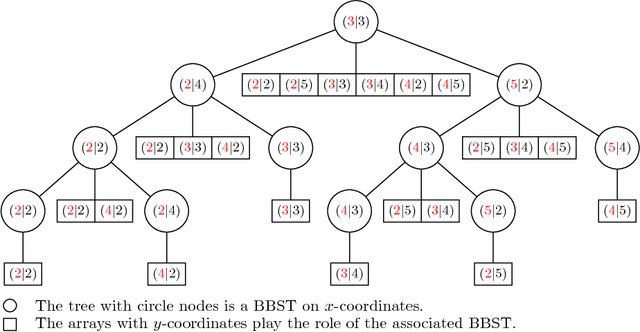Slimane Bellaouar
Unsupervised Graph Attention Autoencoder for Attributed Networks using K-means Loss
Nov 24, 2023Abstract:Several natural phenomena and complex systems are often represented as networks. Discovering their community structure is a fundamental task for understanding these networks. Many algorithms have been proposed, but recently, Graph Neural Networks (GNN) have emerged as a compelling approach for enhancing this task.In this paper, we introduce a simple, efficient, and clustering-oriented model based on unsupervised \textbf{G}raph Attention \textbf{A}uto\textbf{E}ncoder for community detection in attributed networks (GAECO). The proposed model adeptly learns representations from both the network's topology and attribute information, simultaneously addressing dual objectives: reconstruction and community discovery. It places a particular emphasis on discovering compact communities by robustly minimizing clustering errors. The model employs k-means as an objective function and utilizes a multi-head Graph Attention Auto-Encoder for decoding the representations. Experiments conducted on three datasets of attributed networks show that our method surpasses state-of-the-art algorithms in terms of NMI and ARI. Additionally, our approach scales effectively with the size of the network, making it suitable for large-scale applications. The implications of our findings extend beyond biological network interpretation and social network analysis, where knowledge of the fundamental community structure is essential.
Modality Influence in Multimodal Machine Learning
Jun 10, 2023



Abstract:Multimodal Machine Learning has emerged as a prominent research direction across various applications such as Sentiment Analysis, Emotion Recognition, Machine Translation, Hate Speech Recognition, and Movie Genre Classification. This approach has shown promising results by utilizing modern deep learning architectures. Despite the achievements made, challenges remain in data representation, alignment techniques, reasoning, generation, and quantification within multimodal learning. Additionally, assumptions about the dominant role of textual modality in decision-making have been made. However, limited investigations have been conducted on the influence of different modalities in Multimodal Machine Learning systems. This paper aims to address this gap by studying the impact of each modality on multimodal learning tasks. The research focuses on verifying presumptions and gaining insights into the usage of different modalities. The main contribution of this work is the proposal of a methodology to determine the effect of each modality on several Multimodal Machine Learning models and datasets from various tasks. Specifically, the study examines Multimodal Sentiment Analysis, Multimodal Emotion Recognition, Multimodal Hate Speech Recognition, and Multimodal Disease Detection. The study objectives include training SOTA MultiModal Machine Learning models with masked modalities to evaluate their impact on performance. Furthermore, the research aims to identify the most influential modality or set of modalities for each task and draw conclusions for diverse multimodal classification tasks. By undertaking these investigations, this research contributes to a better understanding of the role of individual modalities in multi-modal learning and provides valuable insights for future advancements in this field.
Towards Arabic Multimodal Dataset for Sentiment Analysis
Jun 10, 2023Abstract:Multimodal Sentiment Analysis (MSA) has recently become a centric research direction for many real-world applications. This proliferation is due to the fact that opinions are central to almost all human activities and are key influencers of our behaviors. In addition, the recent deployment of Deep Learning-based (DL) models has proven their high efficiency for a wide range of Western languages. In contrast, Arabic DL-based multimodal sentiment analysis (MSA) is still in its infantile stage due, mainly, to the lack of standard datasets. In this paper, our investigation is twofold. First, we design a pipeline that helps building our Arabic Multimodal dataset leveraging both state-of-the-art transformers and feature extraction tools within word alignment techniques. Thereafter, we validate our dataset using state-of-the-art transformer-based model dealing with multimodality. Despite the small size of the outcome dataset, experiments show that Arabic multimodality is very promising
Efficient Geometric-based Computation of the String Subsequence Kernel
Feb 26, 2015



Abstract:Kernel methods are powerful tools in machine learning. They have to be computationally efficient. In this paper, we present a novel Geometric-based approach to compute efficiently the string subsequence kernel (SSK). Our main idea is that the SSK computation reduces to range query problem. We started by the construction of a match list $L(s,t)=\{(i,j):s_{i}=t_{j}\}$ where $s$ and $t$ are the strings to be compared; such match list contains only the required data that contribute to the result. To compute efficiently the SSK, we extended the layered range tree data structure to a layered range sum tree, a range-aggregation data structure. The whole process takes $ O(p|L|\log|L|)$ time and $O(|L|\log|L|)$ space, where $|L|$ is the size of the match list and $p$ is the length of the SSK. We present empiric evaluations of our approach against the dynamic and the sparse programming approaches both on synthetically generated data and on newswire article data. Such experiments show the efficiency of our approach for large alphabet size except for very short strings. Moreover, compared to the sparse dynamic approach, the proposed approach outperforms absolutely for long strings.
 Add to Chrome
Add to Chrome Add to Firefox
Add to Firefox Add to Edge
Add to Edge